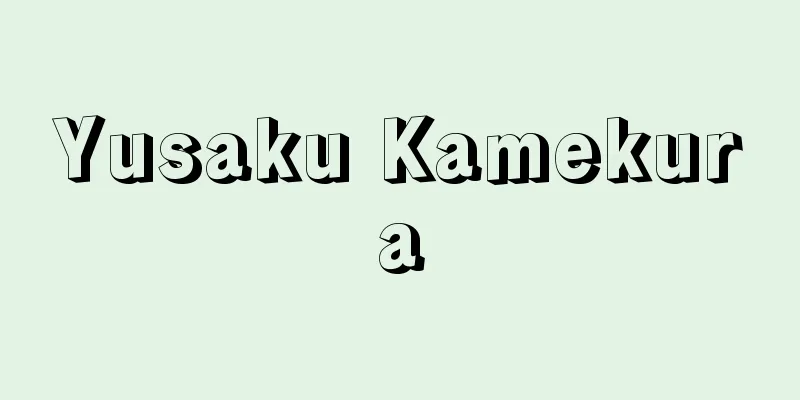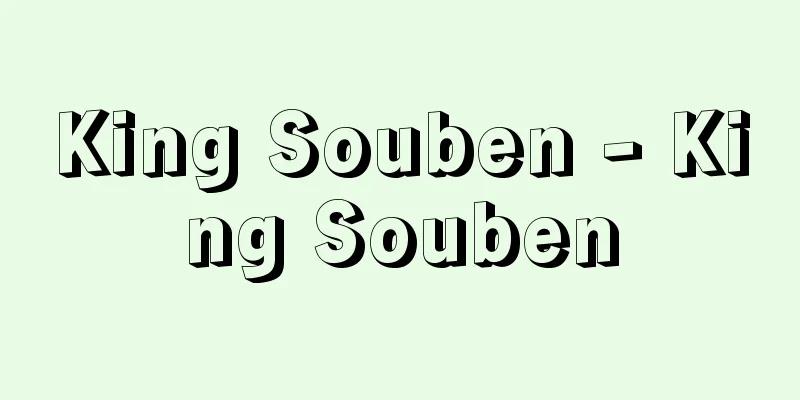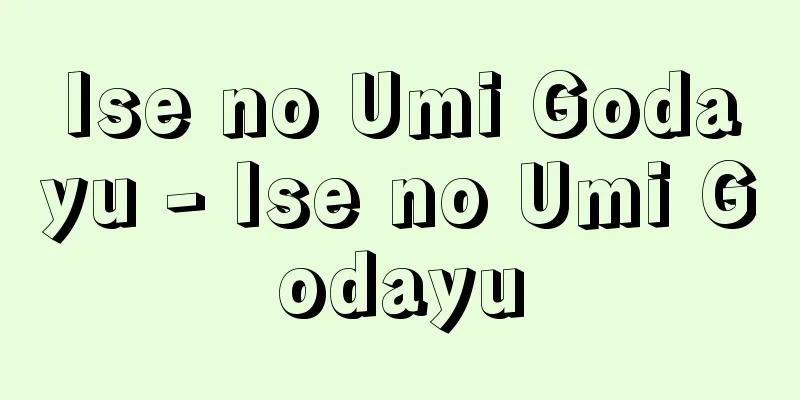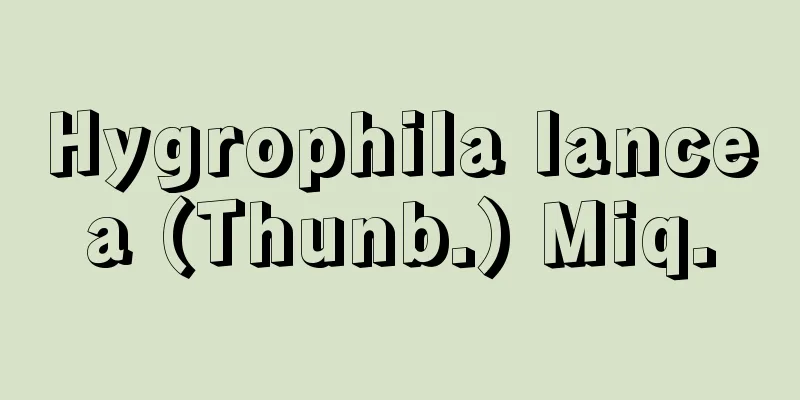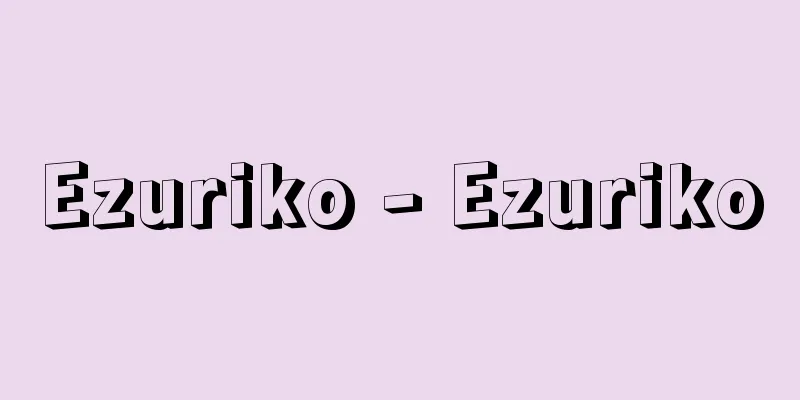Japan-Soviet Neutrality Pact
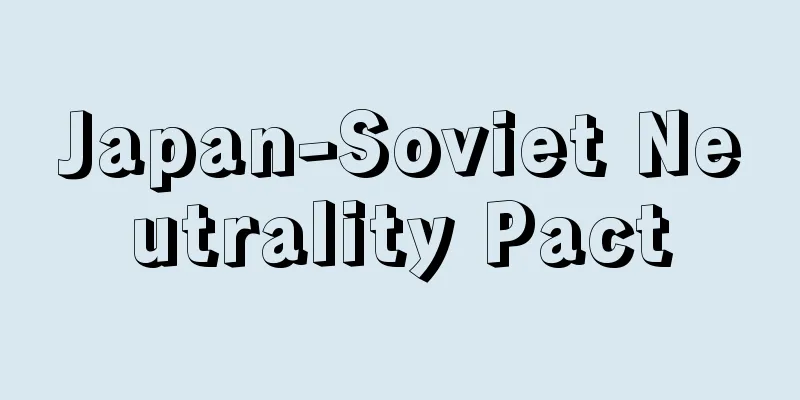
|
Neutrality Pact between Japan and the former Soviet Union was signed in Moscow in April 1941. After Japan was defeated by the Soviet army in the Nomonhan Incident in 1939, it decided to give up on advancing northward for the time being and advance southward. Foreign Minister Matsuoka Yosuke conceived the idea of first forming a Tripartite Pact with Germany and Italy, then developing this into a Quadripartite that included the Soviet Union, and using this power to check Britain and the United States while advancing southward. To realize this plan, Japan concluded the Tripartite Pact with Germany and Italy in September 1940 and proposed the conclusion of a neutrality pact with the Soviet Union. The Soviet Union had also concluded the German-Soviet Non-Aggression Pact in August 1939, but since war had broken out in Europe in September of the same year, it accepted Japan's proposal to avoid a two-front war in Europe and Asia. However, Japan was more in need of the treaty, and so when signing it, Japan had no choice but to promise the Soviet Union that it would make efforts within a few months to resolve the issue of sorting out the interests in North Karafuto (Sakhalin) that had been granted in the Japan-Soviet Basic Treaty of 1925. Thus, on April 13, 1941, Japan and the Soviet Union concluded this treaty, which was valid for five years, and promised that if either country became the target of military action by a third country, the other would maintain neutrality for the entire duration of the conflict. However, the German-Soviet War broke out in June 1941, just over two months after the treaty was signed. Foreign Minister Matsuoka strongly urged that the southward advance be postponed and that war against the Soviet Union be started. The Imperial Conference rejected this argument, confirmed the southward advance, and decided not to intervene in the German-Soviet War for the time being, but at the same time decided that if the German-Soviet War progressed in Japan's favor, it would use military force to resolve the northern issue. For this purpose, the Kwantung Army Special Large-Scale Maneuvers were carried out. However, as Japan began its southward advance, Japan-US relations deteriorated, and war with the Soviet Union did not break out. Japan-Soviet neutrality was maintained even after Japan entered a state of war with the United States, Britain, and others in December of the same year, but on April 5, 1945, the Soviet Union announced that it would not extend the validity of the treaty after its expiration date. On August 9 of the same year, based on the agreement between the Allied Powers, it declared war on Japan and began its attacks. The Japan-Soviet Neutrality Pact was abolished by the Soviet Union while it was still legally valid. [Osamu Nakanishi] "The Road to the Pacific War, Vol. 5, The Tripartite Pact and the Japan-Soviet Neutrality Pact," edited by the Japan Association of International Relations (1963, Asahi Shimbun Company)" ▽ "The History of Japanese Diplomacy, Vol. 21, The Japan-Germany-Italian Pact and the Japan-Soviet Neutrality Pact," edited by the Kajima Institute of Peace Research (1971, Kajima Institute Publishing Association)" ▽ "The History of Japanese-Soviet Diplomatic Relations, Vol. 2, written by Kutkov and translated by the Soviet Diplomatic Studies Association (1967, Tonoshoin)" [Reference] |Source: Shogakukan Encyclopedia Nipponica About Encyclopedia Nipponica Information | Legend |
|
1941年(昭和16)4月にモスクワで調印された日本と旧ソ連との中立条約。日本は、1939年のノモンハン事件でソ連軍に敗れて以来、さしあたり北方への進出をあきらめ、南方へ進むことにした。外務大臣松岡洋右(ようすけ)は、まず独伊と三国同盟を結び、ついでこれを、ソ連を含む四国協商に発展させ、この力を借りて英米を牽制(けんせい)し、この間に南進するという構想をたてた。この構想を実現するため、日本は40年9月に日独伊三国同盟を締結し、ソ連に中立条約の締結を提案した。ソ連も1939年8月に独ソ不可侵条約を締結していたが、同年9月にはヨーロッパで戦争が始まっていたので、ヨーロッパとアジアでの二正面戦争を避けるために日本の提案に応じた。しかし、日本のほうがより強く同条約を必要としていたから、条約調印にあたり、日本は、1925年(大正14)の日ソ基本条約で許与された北樺太(からふと)(サハリン)の利権を整理する問題を数か月内に解決するよう努力するとソ連に約束せざるをえなかった。かくて、日ソ両国は、41年4月13日、有効期間5年の本条約を成立させ、一方が第三国の軍事行動の対象となった場合に、他方は当該紛争の全期間にわたって中立を守ることを約した。 ところが、この条約を結んで2か月余しかたたない1941年6月に独ソ戦が始まった。松岡外相は南進を一時延期して対ソ戦を開始するよう強く主張した。御前会議はこの主張を排し、南進を確認し、さしあたり独ソ戦への不介入を決めたが、同時に、独ソ戦の推移が日本に有利に進展するならば、武力を行使して北方問題を解決することを決めた。このために実施されたのが関東軍特別大演習である。しかし、日本が南進を開始し、日米関係が悪化したので、対ソ開戦には至らなかった。同年12月に日本が米英などと戦争状態に入ったのちも日ソ間の中立は維持されたが、45年4月5日にソ連は同条約の有効期限が満了後延長しないことを通告。同年8月9日には連合国間の協定に基づき、日本に宣戦を布告して攻撃を開始した。日ソ中立条約は、法的には有効期間中にソ連によって破棄された。 [中西 治] 『日本国際政治学会編『太平洋戦争への道 第五巻 三国同盟・日ソ中立条約』(1963・朝日新聞社)』▽『鹿島平和研究所編『日本外交史 第21巻 日独伊同盟・日ソ中立条約』(1971・鹿島研究所出版会)』▽『クタコフ著、ソビエト外交研究会訳『日ソ外交関係史 第二巻』(1967・刀江書院)』 [参照項目] |出典 小学館 日本大百科全書(ニッポニカ)日本大百科全書(ニッポニカ)について 情報 | 凡例 |
<<: Japan-Soviet Treaty of Amity and Commerce
>>: Japan-Soviet Fisheries Treaty
Recommend
Food - Food
…They are found all over Japan, digging U-shaped ...
Hoshino [Village] - Hoshino
A village in Yame County in the southern part of F...
Auditorium
In ancient Greece, hills were used to design outdo...
Yew (first place) - Taxus cuspidata; Japanese yew
An evergreen tall tree of the Taxaceae family, nat...
Earl of Shinto Shrines - Jingihaku
[Noun] Under the Ritsuryo system, this was the chi...
Cover plant - Kabapuranto
… Also called ground cover or cover plant, it is ...
Chaghatai Khan (English spelling)
?-1242 The second son of Genghis Khan, he was the ...
Bud Plucking Baby Shooting
A full-length novel by Oe Kenzaburo, published in ...
Unchu County
…It has been a base for the nomadic tribes of the...
Foreign Exchange Funds - Gaikokukawase Shikin
A fund established under the Foreign Exchange Fund...
Unemployment rate
The figure is the number of unemployed divided by ...
Sympasiphaea annectens (English spelling)
… [Takeda Masatomo]. … *Some of the terminology t...
Macao - Macao (English spelling)
A former Portuguese colony on the west bank of th...
Multi-ride ticket - multi-ride ticket
A type of ticket. There are those in which the tra...
Galuppi, B. - Galuppi
…Scarlatti left behind 600 harpsichord sonatas, w...


